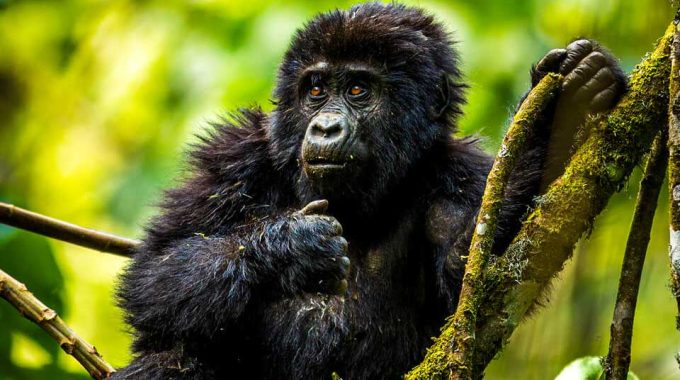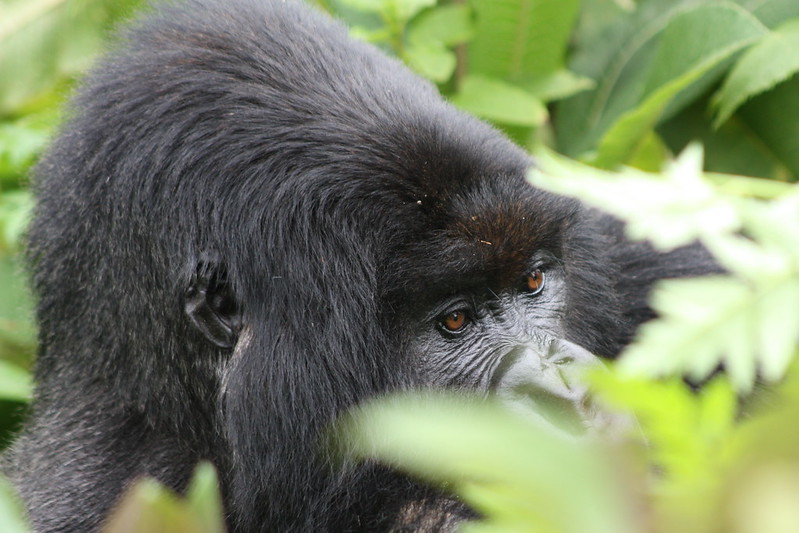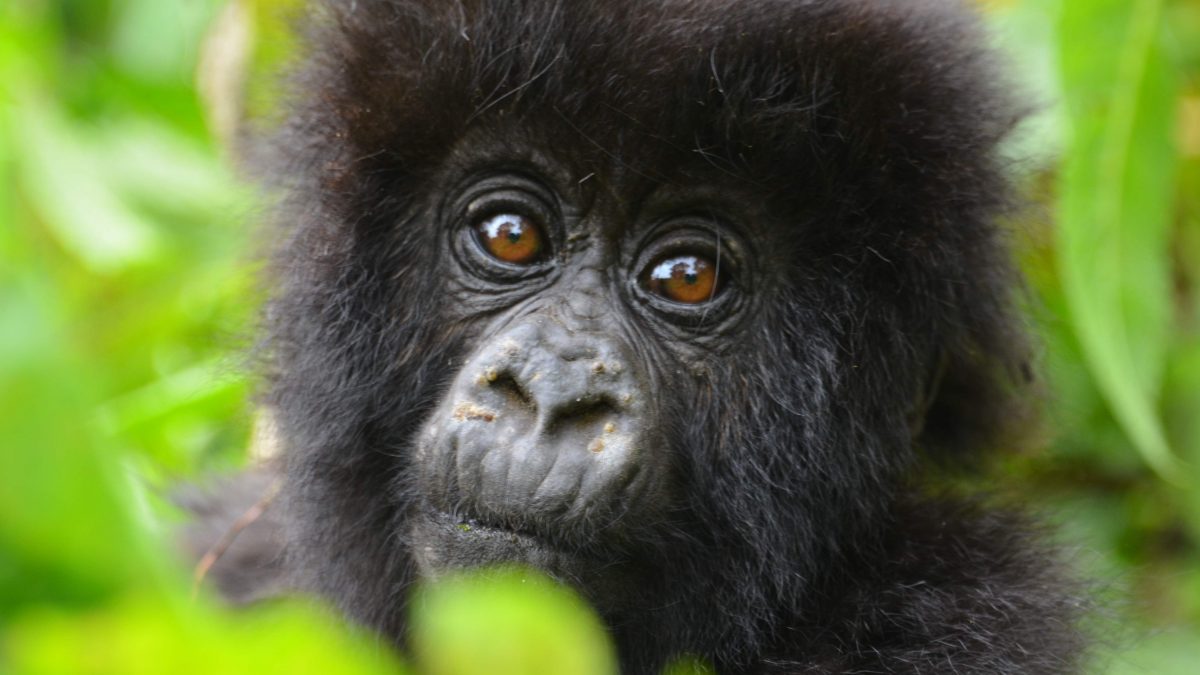
How Hard Is Gorilla Trekking in Rwanda?
How Hard Is Gorilla Trekking in Rwanda?
Gorilla trekking journey in Rwanda presents a perfect blend of challenges and rewards. The difficulty of the gorilla trek is determined by various factors like age, fitness level, group allocation, terrain, weather, and altitude. This incredible experience is one that offers a unique opportunity to connect with these gentle apes in their natural habitat.
So if you are ready to indulge in this incredible experience and wonder of encountering the endangered mountain gorillas up close, don’t let the challenges stop you.
In this blog we detail everything you need to know.
Gorilla trekking in Rwanda is an exhilarating experience, however it can physically demanding as the trek typically involve navigating through steep, muddy trails through dense vegetation, with some families residing at high altitudes, which adds to the challenge. Trekkers can expect to hike for approximately 2 to 9 hours, depending on how far the gorillas are located. Weather also plays a significant role in the difficulty of the trek.
The dry season offers a more manageable experience, while during the rainy season, the trails become slippery and harder to navigate, making the journey more challenging.

Despite the physical challenges, most individuals with moderate fitness levels can complete the gorilla trek in Volcanoes National Park in Rwanda.
The minimum age for visitors taking part in gorilla trekking in Rwanda is 15 years, and individuals must be in good health to ensure the safety of both the trekkers and the gorillas. for participants who may struggle with the terrain, hiring a porter or opting for a sedan chair can provide much-needed assistance. With adequate preparation, such as acclimatizing to high altitude in Kinigi beforehand, many trekkers find that the rewards far outweigh the difficulties, as watching mountain gorillas in their natural habitat is a once-in-a-lifetime experience.
The endangered mountain gorillas live in dense forests with uneven terrain, high humidity, and altitudes that can reach 3,000 meters. During the trek, guides use machetes to clear paths through the thick jungle, and porters are available to assist with the toughest parts of the hike. Trekkers should expect to get muddy and sweaty, as the journey involves scrambling over roots and rocks.
While on a gorilla trek in Rwanda may be hard, it is still achievable for those who are prepared for physical exertion, offering a deep connection with nature and these gentle giants – mountain gorillas.
Let’s dive into the various factors that influence the level of challenge you might face during a gorilla trek in Rwanda.
Stages of trekking gorillas in Volcanoes National Park
The journey through the emerald rainforests to see gorillas in Rwanda can be broken down into two main parts.
The first part – involves walking 30 to 60 minutes from the closest parking area to the park’s boundary. The time it takes depends on how fast the trekkers walk and where the gorilla group is located.
The second part – is the trek through the forest to actually find the gorillas. These gorillas are usually tracked in advance by scouts who stick with the gorillas and send back location bearings to your team. This part of the journey can take anywhere from 10 minutes to two hours.
On the average, to get closer to the edge of the forest takes around 20 to 30 minutes.
The first part of the gorilla trekking journey is relatively easy to predict, generally it is flat and not too demanding, except for the more challenging uphill climb to reach the Susa Group. However, the second part is more unpredictable. It depends on where the gorillas are and how steep the terrain is.
The density of the vegetation cover also plays a big role. Trekkers might need to bend, crawl and find their way through the jungle, especially when dealing with sharp nettles. The weather adds another layer of complexity. If it had rained recently, the ground can be muddy and slippery.
Fitness levels and age considerations
As you plan for a gorilla trekking adventure in Rwanda it is important to recognize that your age and fitness level play a crucial role in determining how difficult gorilla trekking in Rwanda can be. This is particularly noteworthy if you are assigned to track the most demanding gorilla group – the Susa Family.
Apart from Susa Group, individuals who are moderately fit and under 40 years old usually don’t experience significant difficulties. However, it is worth noting that many trekkers are in their 50s or 60s, which can make the hike more taxing for them.
Even if you are someone who works out daily, don’t underestimate the toughness of a Rwanda gorilla trek. Still you might need to take regular breaks due to the effects of high-altitude breathing. So, spend a day or two outside the park to acclimatize.
While a Rwanda gorilla trek can be quite challenging, especially for older travelers, it is quite rare for them to feels overwhelmed that they decide turn back. The experience is very moving, and trekkers usually push through the difficulties.
Location of Rwanda’s gorilla groups
Location of the Rwanda’s gorilla groups is one of the key factors that determine how challenging your gorilla trekking experience in Rwanda will be is the specific gorilla group you are assigned to visit. As a general guideline, the trek to reach the Susa Group is typically the most demanding in Rwanda but also the most rewarding, as it is around 19 members. On the other hand, the easiest gorilla group to access is the Sabyinyo Group.
Trekking to Rwanda’s gorilla groups like Kwitonda, Hirwa, and Group Thirteen is usually relatively easy. In contrast, the hikes Amahoro and Umbano groups can be more strenuous, though not as tough as the trek to the Susa Group. It is important to note that any group might present unexpected challenges or be relatively easy to reach on any given day.
Additionally, it is not possible to guarantee in advance which specific group you will be assigned to by the park authorities. However, the guides at Kinigi make a conscious effort to assign individuals with the most suitable group, especially if you express your preferences.
Typically, those trekking to the Susa Group are often younger individuals with a lean physique, while the opposite tends to be true for the Sabyinyo Group.
Challenges of Terrain, Weather and Altitude
The uneven terrain and the high altitude are other important factors to consider.
The weather conditions and terrain
Many visitors who come to Volcanoes National Park are used to living in towns and cities with well-paved roads and sidewalks. The paths they walk back home are usually well-maintained and easy to navigate.
However, when trekking in gorilla’s natural habitat, you will encounter uneven, slippery paths due to changing seasons.
Wearing waterproof and sturdy shoes or hiking boots with good traction and ankles support will make a big difference during your trek.
If you find it challenging to deal with these conditions, it is wise to avoid the rainy seasons, especially from March to May, when the paths can become quite muddy and difficult to traverse.
The high altitude challenge
Altitude is another factor to consider.
Gorilla trekking in Rwanda takes place at elevations of 2,500 to 3,000 meters. Though not high enough to cause altitude sickness, it is still enough to make even physically fit individuals feel breathless, especially if they are coming from lower altitude. This is especially true for travelers arriving by air from place to lover altitude.
Most of Rwanda is situated above 1,500 meters in elevation. For those concerned about altitude, it is a good idea to spend a couple of days in the Nyungwe Forest Area (altitude2,000 meters) to acclimate to the higher altitudes before heading to the Virunga Mountains.
Similarly, if you are travelling overland from other regions of Africa, planning your Rwanda Gorilla Safari Itinerary to spend some time at medium-high altitudes before the challenging gorilla trek is recommended. For instance, if you are coming from Kenya, spending a few days in Nairobi (2,300 meters) or the Masai Mara (1,600 meters) will better prepare you for the higher altitudes of the gorilla habitat than spending time at the coast.
Local guides and helpers or porters
When you start your gorilla trek, guides will often offer you a simple walking stick, at a fare fee of about $5 which is really helpful as an extra support on uneven and slippery paths.
If you are carrying photography gear or daypack, it is a good idea to hire a porter for a reasonable fee. These local helpers come from the surrounding communities, hoping to make a living by offering muscle help. They can carry your daypack and even help you through the challenging sections of the trail.

Once you are on the trail, the guide sets the pace according to the slowest person in the group. So, take your time and feel free to ask for breaks whenever you need them. It is important to bring and drink plenty of water and have some energy snacks with you. You can easily buy biscuits, chocolate, and energy bars from supermarkets in places like Kigali or Musanze.
Good news is – most people who go gorilla trekking in Rwanda discover that the hiking part is more accessible than they anticipated. In almost all cases, any tiredness you might feel during the climb will quickly fade away when catch sight of the magnificent silverback gorilla. The excitement of a gorilla encounter tends to take away all the exhaustion.
In conclusion– Gorilla tracking in Rwanda can be hard but the rewards are immense. While the difficulty varies based on the factors like age, fitness level, group allocation, terrain, weather, and altitude. The whole experience offers a unique opportunity to connect with these gentle apes in their natural habitat. The physical demands of the gorilla trek are worth it, and with proper preparation, the journey becomes more manageable.
